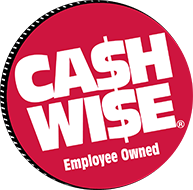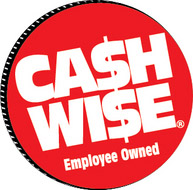As my son, Alex, and I sat in a bustling auditorium waiting for my granddaughter’s spring program to begin, I mentioned that I needed a subject for this blog. His immediate response, “Hummus! I eat it every day, it’s an easy go-to snack.”
Alex’s life is one of the busiest I know of. He goes to school in St. Paul during the day, works as a bartender in a high end restaurant downtown Minneapolis at night, drives his daughter to school in Roseville, plays Lego’s with his son at home in Lino Lakes and his wife is exactly nine months pregnant with their third child. If he finds hummus an easy, go-to snack I believe him!
 Hummus, from the Arabic word meaning “chickpeas” is a Middle Eastern dip/spread that has been around for practically forever. Well, at least long enough that it’s exact origin is a little difficult to trace. Chickpeas originated in the Middle East, probably in Turkey and then were eventually introduced to India. This cool season annual can be grown just about anywhere but they require about a hundred days in full sun.
Hummus, from the Arabic word meaning “chickpeas” is a Middle Eastern dip/spread that has been around for practically forever. Well, at least long enough that it’s exact origin is a little difficult to trace. Chickpeas originated in the Middle East, probably in Turkey and then were eventually introduced to India. This cool season annual can be grown just about anywhere but they require about a hundred days in full sun.
Chickpeas and garbanzo beans are the same thing. Chickpea is the English term. Garbanzo beans the Spanish. However it is neither a bean nor a pea but rather a legume, like peanuts.
The other essential ingredient in hummus is tahini. Tahini, similar to the consistency of peanut butter, is made from toasted hulled sesame seeds that are ground into a paste. Another Arabic word, tahini’s root word means “to grind.”
 There are many commercially made hummuses (I checked– the plural for Hummus is hummases, not hummas’, not hummai…) to choose from. In my Natural Foods department I carry Lilly’s in my refrigerated section and Wild Garden on the shelf. Both offer the tangy goodness and great flavor for a quick pick snack or spread. To make your own is a snap!
There are many commercially made hummuses (I checked– the plural for Hummus is hummases, not hummas’, not hummai…) to choose from. In my Natural Foods department I carry Lilly’s in my refrigerated section and Wild Garden on the shelf. Both offer the tangy goodness and great flavor for a quick pick snack or spread. To make your own is a snap!
In making your own hummus you get to control the ingredients and customize it to your liking. Adding black beans or roasted red peppers, even jalapenos introduce different layers of flavor and bring to mind more ways to enjoy this tasty dip.
Hummus as a dip for pita chips is the most common use around my neighborhood, and it is traditionally used that way. Another traditional way to use it is as an accompaniment to the Middle Eastern food of Falafel, which is served in a pita. So, the pita is a very common and useful way to eat this healthful, go-to snack for my son Alex, but there are many other ways to enjoy it.
 Use it as a sandwich spread instead of mayonnaise.
Use it as a sandwich spread instead of mayonnaise.- Add some vinegar and blend to make a great salad dressing.
- Toss with your favorite pasta.
- Dip fresh vegetables, like cut up celery, carrots, sweet peppers and broccoli.
- For a spin on deviled eggs, mix some in with yolks.
- Hummus is a great dipping sauce for chicken strips.
I believe that the uses for hummus are as far and wide as one’s creativity and imagination.
I think Alex and his wife Krista might find themselves turning to this quick and easy treat even more now. The day after that school program, the one I mentioned in the beginning of this article (seriously the very best school program I have ever attended, by the way,) Krista gave birth to a sweet 7# 15 oz. boy! On her due date! With their busy lives they don’t mess around.
I think I will make some hummus to put into a food basket for this wonderful family of five.
- 1-2 Cloves of Garlic
- 15 Oz. Can Full Circle Garbanzo Beans, drained
- 3 T. Santa Cruz Lemon Juice
- 3 T. East Wind Tahini
- ½ tsp. Salt
- Black pepper, to taste
- Full Circle Olive Oil, to drizzle atop before storing in refrigerator
- Put all ingredients into blender and blend to a smooth paste.
- Put into a dish and drizzle with 2 T. Full Circle Olive Oil on top.
- Store in refrigerator.
Variation Ideas:
 Roasted Beets
Roasted Beets- Olives- of any color, I like Kalamata with Feta Cheese, or a handful of sliced Black Olives. (Green olives add their classic tang.)
- Strawberries and Honey
- Fresh Jalapeños and Cilantro
- Roasted Red Peppers
- Sun Dried Tomatoes and Basil
- Paparika and Lemon add a great kick as well as featured in the picture to the right.
Just like the uses for hummus, the variations are as far and wide as one’s imagination!
Cheryl
Coborn’s Natural Foods Manager
Clearwater, MNC
Click Here for more articles written by Cheryl










